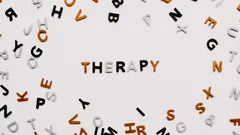261
7
5 minutes
Suggested Articles

Digital health advocates face harsh truths as AI therapy chatbots falter
New research reveals why AI-powered chatbots still fall short as virtual therapists. Learn what went wrong, see the numbers, and discover how this impacts the future of digital mental health support.

How AI and Micro-Credentials Are Reshaping Future Careers in Tech
AI & Everyday Tech

Unlock Your Productivity and Privacy With a Local AI Assistant on Your PC
AI & Everyday Tech

AI coding assistants like Copilot and ChatGPT are transforming developer workflows
AI & Everyday Tech

AI Is Revolutionizing Creative Careers—Here’s How Americans Are Thriving
AI & Everyday Tech

AI Takes On Game Cheaters, Transforming Fair Play in Competitive Gaming
AI & Everyday Tech

Meta AI transforms private chats with smart assistant features on social apps
AI & Everyday Tech

Generative AI Is Quietly Transforming Workflow Automation Across America
AI & Everyday Tech

Apple’s AI FaceTime nudity filter sparks debate over digital privacy
Smartphones & Apps

Unlock Powerful Productivity and Reclaim Your Time With Smart AI Tools
AI & Everyday Tech

Playing video games together strengthens relationships and sparks real connection
AI & Everyday Tech

US crypto pioneers transform bold risk into life-changing fortunes
AI & Everyday Tech

Tech leaders embrace waste-to-carbon solutions as Microsoft bets big on green AI
AI & Everyday Tech

Travelers and campers embrace portable backpack laundry tech for freedom and clean clothes anywhere
Gadgets & Reviews

Sleep experts champion a smart anti-snoring belt for restful nights and healthier mornings
Gadgets & Reviews

Drivers use Google Maps and Waze to avoid fines but risk safety trade-offs
AI & Everyday Tech

App lovers seize this week’s best free premium downloads before time runs out
Smartphones & Apps
 W3 CodeCraft
W3 CodeCraft

Comments